| Fire & Sword:
Scenario Preview, Part Three
By Mike Bennighof, Ph.D.
November 2024
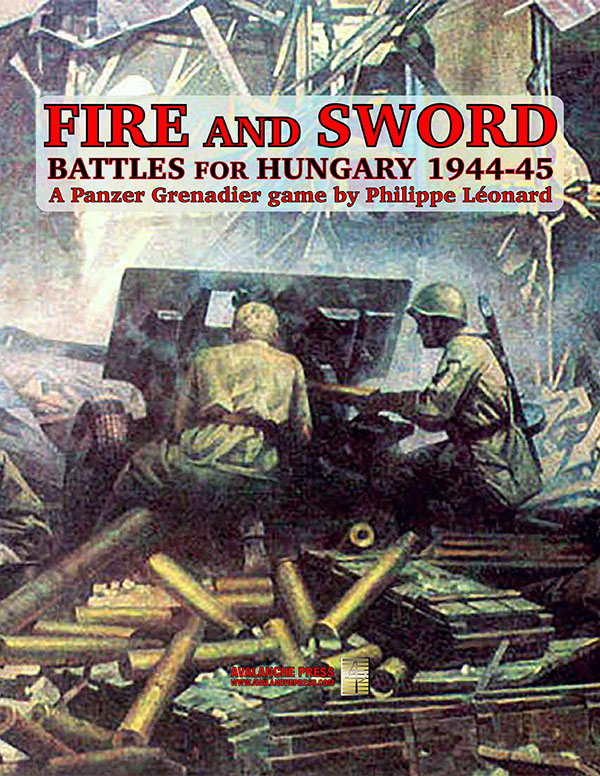 Philippe Léonard does his homework. Philippe Léonard does his homework.
That’s evident in Panzer Grenadier: Fire & Sword, our huge (by our standards) game of the 1944-45 battles for Budapest. It’s at platoon scale, and players are in the role of a higher-level commander (somewhere between a battalion and a brigade, depending on the size of the scenario).
For Fire & Sword, Philippe has included the bewildering array of special units that both sides threw into the desperate fight for the Hungarian capital: Hungarian Nimrod anti-aircraft tanks, German “Jaguar” deception units, Hungarian anti-tank rockets, Soviet penal units, Hungarian paratroopers, Italian-made tanks in SS police service, Hungarian river gunboats. And still more.
Those units show up in the fighting for Csepel Island, the subject of Chapter Three. Let’s have a look at it.
See the rest of the preview here:
• Scenario Preview, Part One
• Scenario Preview, Part Two
• Scenario Preview, Part Four
• Scenario Preview, Part Five
• Scenario Preview, Part Six
• Scenario Preview, Part Seven
Chapter Three
Csepel Island
After the failure of Operation Budapest, Second Ukrainian Front’s only option was to broaden the attack and try to encircle Budapest instead of charging head on. The 46th Army, the left part of the pincer, was to cross the Soroksár branch of the Danube, seize Csepel Island and then capture a large bridgehead on the western bank of the river before advancing towards Zsámbék to outflank the Hungarian capital from the west. Csepel Island is the largest on the Danube. It’s separated from eastern Hungary by a 58-kilometer-long branch, Ráckvei-Duna, which is 130 to 350 meters wide and six to 12 meters deep. In the northern part of the island is located the town of Csepel, one of the country’s most vital industrial centers (including the famous Manfréd Weiss Steel and Metal Works) and part of the city of Budapest. The island was defended by the weak Hungarian 1st Hussar Division that had sustained heavy losses during the first part of the Budapest battle. The defenders repulsed Soviet attempts to cross the river on 14, 15, 16 and 18 November but by 22 November, most of the island had been secured.
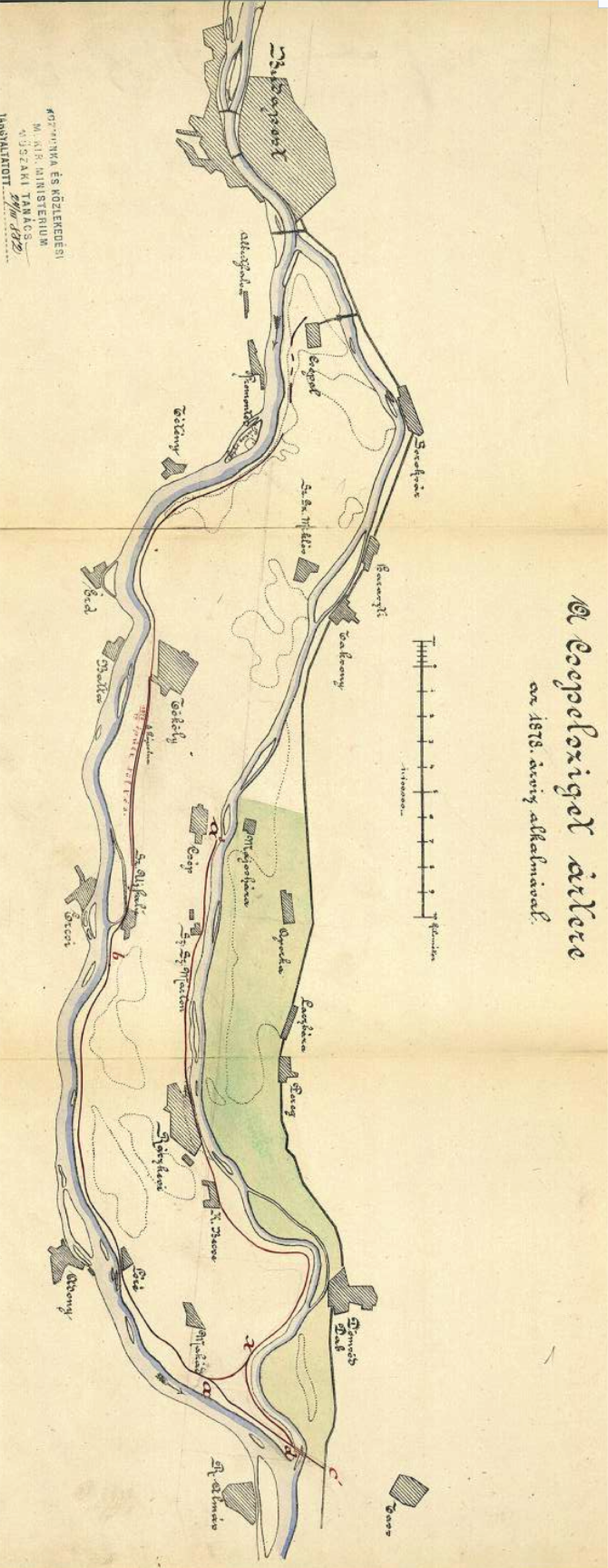 Despite the industrialized urban north end, most of Csepel Island presented very difficult terrain during rainy weather, with very few hard-surfaced roads. The dismounted Hungarian 1st Hussar Division, a combat-experienced but greatly depleted cavalry unit, had responsibility for the island’s defenses. The hussars had fortified houses, dug trenches, and built emplacements for machine guns and artillery. They’d also laid 30 kilometers of barbed wire and run high-voltage electrical current through the wire. Despite the industrialized urban north end, most of Csepel Island presented very difficult terrain during rainy weather, with very few hard-surfaced roads. The dismounted Hungarian 1st Hussar Division, a combat-experienced but greatly depleted cavalry unit, had responsibility for the island’s defenses. The hussars had fortified houses, dug trenches, and built emplacements for machine guns and artillery. They’d also laid 30 kilometers of barbed wire and run high-voltage electrical current through the wire.
Those preparations didn’t stop the defenders from being surprised by Soviet landings during the night of 21-22 November. The assault teams moved quickly to secure passages through the electrified wire. Behind them, the Soviets landed in good order and exploited the breakthroughs. By the morning of 23 November, the Soviet 37th Rifle Corps had three divisions on the island. They quickly captured the strong points of Toköl, Lorev, Makad and Rackeve and reached the opposite shore of Csepel Island.
The German Army Group South reacted quickly to this threat, detailing the Hungarian 1/II Parachute battalion, a battalion of cadets from the Military Transport School in Budapest, and the combat group of the Feldherrnhalle Panzer Grenadier Division to Csepel Island, as well as the 1st and 9th Artillery Battalions and two independent battalions.
The Soviets captured the Tököl railway station during the night of 22/23 November, but started to lose momentum on the 23rd. The Axis troops put up fanatical resistance, and their repeated counter-attacks brought the advance to a halt. The Germans assembled a large variety of AFVs in the northern part of the island: Panthers, JPzIV/70 tank destroyers, assault guns and armored halftracks from the Feldherrnhalle but also Hetzer tank destroyers of the 22nd SS, the Italian-made tanks of the police tank company as well as some Toldi and Turán tanks of the Hussar division. The Axis forces also received constant fire support from the artillery batteries of the western bank. The Hungarian gunboats Debrecen, Kecskemét, and PM-1 shelled Soviet positions at Tököl on several occasions.
The increased Axis resistance, and especially their sharp, armor-supported counterattacks, forced the Soviet 46th Army to bring into play the entire might of its tank-killing arm. Six anti-tank regiments, together more than one hundred 76.2mm and 57mm anti-tank guns, entered the infantry lines and managed to contain the repeated German and Hungarian counterthrusts. The increased firepower finally allowed the Soviets to gain more ground. The Germans responded with yet more reinforcements.
Even so, the Soviet 23rd Rifle Corps completed the crossing on 25 November and joined 37th Rifle Corps. The front finally came to a standstill between Lakihegy and Királyerdö when the Soviets had advanced far enough for the Hungarian artillery, supported by the Danube Flotilla’s gunboats, to open fire on them with 103 guns from the suburbs of Csepel in the north and Soroksár in the east, and the far bank of the Danube in the west. When the Soviets attempted to capture the northernmost part of the island, including the Manfréd Weiss Steel and Metal Works, they encountered such vigorous resistance that the offensive stalled.
Scenario Ten
Probing Csepel
8 November 1944
South of Szigetbecse, Hungary
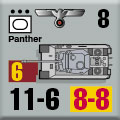 At first, the Soviets believed that Csepel Island could easily be taken from its relatively weak garrison. Throughout early November, reconnaissance probes crossed the Danube’s Soroksár channel onto the island, seeking prisoners and information. On 7 November, two Soviet infantry companies from the 23rd Rifle Corps crossed the Danube at different spots near Dömsöd and began to advance northwards on the island. On the next day, the Hungarian 1st Hussar Division, reinforced by two Hungarian assault artillery battalions, drove off the Soviets. At first, the Soviets believed that Csepel Island could easily be taken from its relatively weak garrison. Throughout early November, reconnaissance probes crossed the Danube’s Soroksár channel onto the island, seeking prisoners and information. On 7 November, two Soviet infantry companies from the 23rd Rifle Corps crossed the Danube at different spots near Dömsöd and began to advance northwards on the island. On the next day, the Hungarian 1st Hussar Division, reinforced by two Hungarian assault artillery battalions, drove off the Soviets.
Conclusion
Most of the Hungarian assault gun crews fought on foot as infantry, but on their left flank seven Turán tanks from their battalion supported the attack. The Hungarianss pushed back the Soviets and reached the embankment of the Soroksár branch of the Danube but Soviet snipers, firing from the opposite bank, made their lives a misery there. The Soviets gradually came to realize that a much stronger force would be necessary to secure the island.
Notes
It’s a small-scale brawl featuring dismounted Hungarian cavalrymen, who’d rather be elsewhere but they do have some tanks. On the other side, the Soviets are actually outnumbered despite being on the attack, but with morale and leadership and artillery on their side that might not matter.
Daily Content includes no AI-generated content or third-party ads. We work hard to keep it that way, and that’s a lot of work. You can help us keep things that way with your gift through this link right here.
Scenario Eleven
Soroksár Duna
22 November 1944
Csepel Island, Hungary
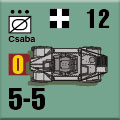 In mid-November, the Soviet 37th Rifle Corps shifted to the left flank of 46th Army and, together with 23rd Rifle Corps, forced their way over the Csepel island, Hungary, (also known as the Csepel Dunaág river or KisDuna, an anabranch of the Danube) on the night of 21/22 November. Their objectives were to destroy the Axis defenses between the Csepel Dunaág and the Danube, to present a direct threat to southern Budapest, to subsequently force the Danube and to get into the flank of the enemy troops defending the city. In mid-November, the Soviet 37th Rifle Corps shifted to the left flank of 46th Army and, together with 23rd Rifle Corps, forced their way over the Csepel island, Hungary, (also known as the Csepel Dunaág river or KisDuna, an anabranch of the Danube) on the night of 21/22 November. Their objectives were to destroy the Axis defenses between the Csepel Dunaág and the Danube, to present a direct threat to southern Budapest, to subsequently force the Danube and to get into the flank of the enemy troops defending the city.
They crossed at night along a front of about 20 kilometers, without any artillery preparation to assure surprise. On the front line of the Hungarian 3rd Army, the Soviet 316th Rifle Division crossed between Szigetcsép and Szigetszentmiklós around midnight. The Soviet troops quickly pushed back the elements of 1st Hussar Division defending the area towards the west and northwest. The Axis positions – a line of trenches along the riverbank - were protected by minefields, barbed wire, and electrically charged fences although very few Hungarians actually manned them. As the Soviets secured bridgeheads along the western bank of the river, their artillery crossed over as well. The defenders observed 30 Soviet AFVs that had crossed in the area of Szigetcsép; it’s possible that these were SU-76M of 46th Army’s two self-propelled artillery regiments together with those of the 316th Rifle Division.
Conclusion
 Since the island had to be taken very quickly, 46th Army placed considerable firepower at the troops’ disposal. Landing craft of the Danube Flotilla brought a large number of 45mm anti-tank guns and mortars across to Csepel Island to directly support the first echelon infantry. Artillery firing over open sights and regimental (120mm) and battalion (82mm) mortars played the main role. Since the island had to be taken very quickly, 46th Army placed considerable firepower at the troops’ disposal. Landing craft of the Danube Flotilla brought a large number of 45mm anti-tank guns and mortars across to Csepel Island to directly support the first echelon infantry. Artillery firing over open sights and regimental (120mm) and battalion (82mm) mortars played the main role.
During the morning hours, elements of the Soviet 316th Rifle Division reached the southern part of Szigetszentmiklós and also broke into Tököl. As a result of this powerful Soviet blow, the Hungarian 1st Hussar Division disintegrated. The 2nd Hussar Regiment, together with a part of the divisional artillery, retreated to the western bank where it was placed under command of the 271st People’s Grenadier Division while the remnants of the 3rd and 4th Hussar Regiments fell back to the north, to Szigetszentmárton and Tököl where they finally made a stand.
Two of their Csaba armored cars were knocked out south-east of Tököl: the first one at 0800 and the second at noon. The AFVs of the 1st Tank Regiment’s 6th Company (three Toldi II light tanks, one or two Turán I medium tanks and one or two Nimród anti-aircraft vehicles) defending the highway at Horthy-liget, between Tököl and Szigetszentmiklós, surrendered to the Soviets at dawn. The lone operational Turán II of the regiment’s 7th Company fought on at Tököl and Szigetszentmiklós.
The Hungarian troops established an improvised blocking position on the southern perimeter of Tököl and also along the Budapest suburban railroad, which temporarily halted the Soviet advance. The Axis artillery, located on the Danube’s west bank and on Csepel, brought the blocking position’s forward edge under fire. In late morning/early afternoon, the 22nd SS Cavalry Division based at Soroksár-Dunaharaszti took over command of the defensive position.
At 1140, the division ordered the four Italian-made M15/42 of the 12th Police Panzer Company to Csepel as well. The 1075th Rifle Regiment of the 316th Rifle Division, supported by four SU76M self-propelled guns, advanced on Szigetszentmiklós, south of the railroad. The regiment’s 2nd Battalion bypassed the village from the west in order to occupy Point 102. The Germans counterattacked with two battalions supported by the 10 newly arrived light tanks and tank destroyers; the Soviet attack stalled and their troops went over to the defensive. In the course of this fighting the Soviet self-propelled guns destroyed a German light tank on the left flank of the 2nd Battalion and Soviet riflemen with anti-tank rifles knocked out another German AFV.
During the day, the 1073rd Rifle Regiment occupied Horthy-liget with the support of the 1505th Self-Propelled Artillery Regiment (SU76M), while two companies of the 1077th Rifle Regiment secured the area of the Danubian Aircraft Works and the airfield located just north of Tököl. In the evening hours, a German-Hungarian counterattack south of Szigetszentmiklós tried to retake the blocking positions in the wooded terrain. Elements of the 17th SS Cavalry Regiment and Hungarian 1st Hussar Division ejected the Soviets from the southern half of Szigetszentmiklós in violent urban combat and reached the railway again. In the evening, without the SS militia, three Hungarian battalions (3rd Recon and two artillery battalions) continued to fight along the railroad, where the front line temporally stabilized. German-Hungarian aircraft flew a total of 150 sorties, mainly against Soviet supplies arriving on Csepel.
Notes
This is a much bigger scenario, with the mostly Hungarian defenders wielding a whole passel of weird wonder weapons against a very conventional very strong Soviet assault force with plenty of support weapons and artillery, and a little armor.
Scenario Twelve
Duel for Tököl
25 November 1944
Tököl, Hungary
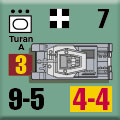 Alongside the 316th Rifle Division, the 108th Guards Rifle Division crossed the Danube to Csepel Island, to join the left flank of 37th Rifle Corps along with two anti-tank brigades. On 24 November, the Guards captured Tököl and the 316th Rifle Division cleared Szigetszentmárton. Alongside the 316th Rifle Division, the 108th Guards Rifle Division crossed the Danube to Csepel Island, to join the left flank of 37th Rifle Corps along with two anti-tank brigades. On 24 November, the Guards captured Tököl and the 316th Rifle Division cleared Szigetszentmárton.
The Germans and Hungarians fell back to the north and occupied a segment of the Attila Line. On 25 November the Soviets resumed their attempts to clear the island. They were halted by fierce Axis resistance and counterattacks from armor and infantry.
“The renewed enemy breakthrough from the Kis-Duna (small tributary of Danube) branch came at dawn,” the commander of a Hussar assault detachment in Tököl remembered. “I was in one of the schools in Tököl. The enemy troops - probably penal companies - approached the railway in thick clusters. The Hungarian fire into the mass killed most of the attackers but the Axis troops were eventually forced out of the village after being encircled. On the next day, there was a counterattack supported by German tanks. However, the Soviets were splendidly dug in and offered serious resistance. We hit them but we were unable to clean up Tököl completely.”
Conclusion
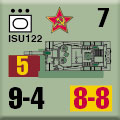 Alarmed by the multiple threats from the south, the German Army Group South detailed a jumbled array of reinforcements for Csepel Island: a Hungarian parachute battalion, a cadet battalion and more ex-Brownshirts from the Feldherrnhalle Panzer Grenadier Division as well as two artillery battalions and two independent battalions. The gunboats Debrecen and PM-1 from the Hungarian Danube Flotilla sailed down the river to Tököl and bombarded the Soviets positions there. All of a sudden, they came under intense Soviet machine-gun and artillery fire. In the duel that followed, PM-1 was heavily damaged while Debrecen ran aground and burned out completely. The most popular version about this is that Debrecen was sunk by tank fire and more specifically by T34 fire. However, they were no Soviet tanks on the island, just SU-76 self-propelled guns. Alarmed by the multiple threats from the south, the German Army Group South detailed a jumbled array of reinforcements for Csepel Island: a Hungarian parachute battalion, a cadet battalion and more ex-Brownshirts from the Feldherrnhalle Panzer Grenadier Division as well as two artillery battalions and two independent battalions. The gunboats Debrecen and PM-1 from the Hungarian Danube Flotilla sailed down the river to Tököl and bombarded the Soviets positions there. All of a sudden, they came under intense Soviet machine-gun and artillery fire. In the duel that followed, PM-1 was heavily damaged while Debrecen ran aground and burned out completely. The most popular version about this is that Debrecen was sunk by tank fire and more specifically by T34 fire. However, they were no Soviet tanks on the island, just SU-76 self-propelled guns.
With the villages changing hands several times during the day, the front finally came to a standstill around Lakihegy in the north of the island. In late afternoon, the Soviet penal battalion (political prisoners) attacked again. Everything fired at them so that the assault collapsed with huge losses. On this day, apart from successfully beating back all Axis counterattacks, the Soviets also managed to inflict a heavy blow on the Hungarian Danube Flotilla by sinking one of its main gunboats (Debrecen) and seriously damaging another (PM-1).
Notes
I added a second river board to the original set, specifically for these scenarios (it sees use in a few other places, too). The array of Panzer Grenadier weirdness here is just bewildering: Italian-made tanks in SS colors, Soviet penal troops, Hungarian gunboats, paratroopers and rockets. This is simply glorious.
Scenario Thirteen
Hill 102
25 November 1944
Szigetszentmiklós, Hungary
 On the previous day, the Germans and Hungarians fell back to the island’s north end and occupied a segment of the Attila Line fortifications. On the morning of 25 November, the front line followed a line 500 meters north of Szigetszentmiklós, one kilometer south of Hill 102 and one kilometer north of Tököl. The Soviet 1075th Rifle Regiment launched an attack supported by SU-76 self-propelled guns, from the west and southwest towards the flank of the SS 17th Cavalry Regiment defending Szigetszentmiklós. On the previous day, the Germans and Hungarians fell back to the island’s north end and occupied a segment of the Attila Line fortifications. On the morning of 25 November, the front line followed a line 500 meters north of Szigetszentmiklós, one kilometer south of Hill 102 and one kilometer north of Tököl. The Soviet 1075th Rifle Regiment launched an attack supported by SU-76 self-propelled guns, from the west and southwest towards the flank of the SS 17th Cavalry Regiment defending Szigetszentmiklós.
The attack began with self-propelled guns (SU76 from 432nd Independent Self-Propelled Artillery Battalion and 1505th Self-Propelled Artillery Regiment) shelling the western bank of the Danube. The attackers made rapid progress towards the right flank of the Germans, but the Feldherrnhalle Panzer Grenadier division in command of Axis forces on the island prepared counterattacks to regain the lost territory.
Conclusion
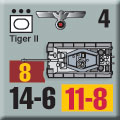 The Soviet 316th Rifle Division captured Hill 102 and Hermina Major, a hamlet close to the Tököl small airfield. However, in late afternoon, the Hungarians supported by assault guns and half-tracks from the Feldherrnhalle Panzer Grenadier Division mounted a counterattack to drive the Soviets back to their jump-off positions. The Soviet 316th Rifle Division captured Hill 102 and Hermina Major, a hamlet close to the Tököl small airfield. However, in late afternoon, the Hungarians supported by assault guns and half-tracks from the Feldherrnhalle Panzer Grenadier Division mounted a counterattack to drive the Soviets back to their jump-off positions.
Two Feldherrnhalle battalions attacked from the area of Lakihegy and Hill 102 (two kilometers north of Szigetszentmiklós) in the direction of Szigetszentmiklós, with the support of the Hungarian 1st Medium Mortar Battalion (120mm mortars) and the 204th Anti-Aircraft Battalion. The eight StuGIII assault guns and sixteen half-tracks fanned out across a 300-meter frontage and the SPW251/21 anti-aircraft half-tracks, each with a triple-mount of 20mm auto-cannons, poured a hellish fire into the Soviets who fled in panic. The Germans eventually reached the middle of Szigetszentmiklós by 2000, with the Feldherrnhalle assault guns in action well past nightfall, when some houses of Szigetszentmiklós were in flames. The Axis wielded significant artillery firepower including anti-aircraft and heavy anti-tank guns. The experimental Hungarian 1944 Mace-thrower, or Szálasi, rocket saw its first combat on Csepel Island. An improvised Hungarian artillery unit served these weapons from 23 November to the end of December. Axis forces abandoned the northern half of Szigetszentmiklós on the following day (26 November).
Notes
The Soviets are on the attack on a narrow front, against a combined German-Hungarian defense featuring Hungarian paratroopers and home-made rockets. The defenders are not very stout, but they are well-supplied with heavy weapons.
You can order Fire and Sword right here.
Sword of Fire
Fire & Sword
Stalin’s Tanks
Eastern Front Artillery
Retail Price: $145.96
Package Price: $120.00
Gold Club Price: $96.00
Take up the Sword of Fire Here.
Sign up for our newsletter right here. Your info will never be sold or transferred; we'll just use it to update you on new games and new offers.
Mike Bennighof is president of Avalanche Press and holds a doctorate in history from Emory University. A Fulbright Scholar and NASA Journalist in Space finalist, he has published an unknowable number of books, games and articles on historical subjects.
He lives in Birmingham, Alabama with his wife and three children; he misses his dog, Leopold.
Daily Content includes no AI-generated content or third-party ads. We work hard to keep it that way, and that’s a lot of work. You can help us keep things that way with your gift through this link right here. |
